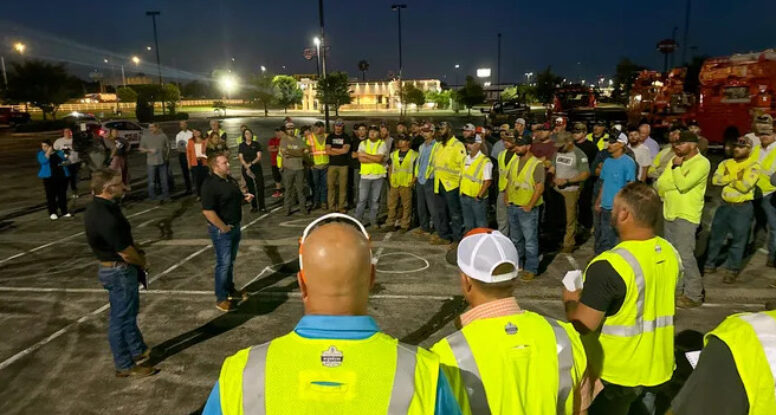
The Truth About Storms and Power
In the wake of Hurricane Beryl’s mawl of the Houston power grid, the current divisive political environment has spelled over in a most unexpected, unhelpful, and dangerous way: citizens and local politicians piling on CenterPoint Energy for alleged poor and slow recover performance. There have even been armed confrontations. This has to stop, and it has to stop now, and it never made sense in the first place.
Let’s look at the data:
Beryl knocked out power for 2.3 million CenterPoint customers. Half were restored within 48 hours. As of this posting, about 168 hours (or 7 days) after the streets became safe enough to begin cleanup, fully 98% of customers have been restored. So how does that stack up?
- Hurricane Sandy knocked out power to 8.5 million people across 21 states. In New York & New Jersey (each of which had outages comparable to Beryl) restoration took two full weeks . And in Connecticut, Delaware, Pennsylvania and Maryland, it took ten days.
- A 2012 derecho near Roanoke knocked out power to about a million Virginians, and restoration took over a week for most, and several weeks for many.
- Hurricane Ike (Houston, 2008) knocked out power for 3 million customers, some not restored for four weeks, but CenterPoint had restored power to 50% of its 2.1 million affected customers within 5 days, 2 faster than Entergy, and 100% in 18 days, 6 days faster than Entergy. Overall, Beryl’s restoration in the early days was 15% faster than after Ike.
- Hurricane Matthew (2016) knocked out 2.5 million for whom full restoration took 10 days even though split across four utility companies.
- Hurricane Irma (2017) knocked out 7.7 million, substantial restoration took 10 days though split across five utilities.
- Hurricane Michael (2018) Affected 1.4 million customers and took 2 weeks for most to be restored, with a few percent taking several weeks , even though split across five utilities.
- Hurricane Ian (2022) knocked out 2.5 million and took two weeks+ , even though split across seven utilities.
So in what way, exactly, is CenterPoint falling down on the job?
CenterPoint spends $46 million a year on tree trimming–more than any other utility in the state.
CenterPoint has 24,000 miles of underground distribution lines, more than any other utility in the state (20% than the runner up) the third highest number in the country–although it’s important to note that underground lines cost 50 times as much, and are far more costly and time consuming to repair and maintain.
Each year, CenterPoint replaces wooden poles with stronger composites or concrete, replaces pylon towered with stronger, newer designs, an upgrades substations and other infrastructure for better protection and resilience, not just against flooding and storm damage, but innumerable other threats.
Objectively speaking, the data is clear. No utility in the country does a better job of storm hardening and recovery than CenterPoint Energy, but it operates in the real world, where big storms cause big problems, rate payers want expensive solutions but not the expensive bills that go with them. And when things do go down, hundreds of CenterPoint employees swing into action, working 16 hour days supporting thousands of mutual assistance workers with food, lodging, laundry, equipment, and more, while their own families sit in the dark.
So maybe step back and let them do it, and show some appreciation.
